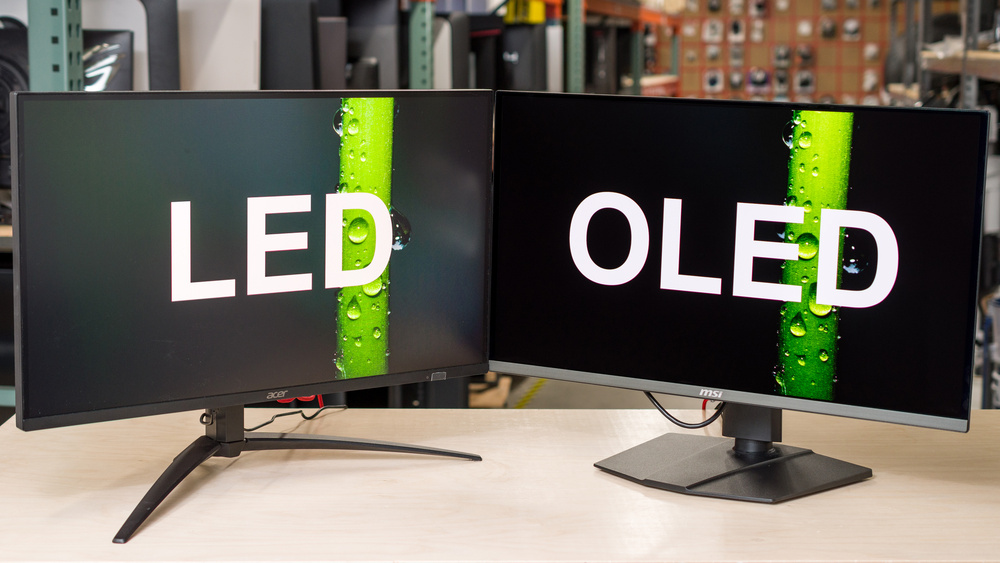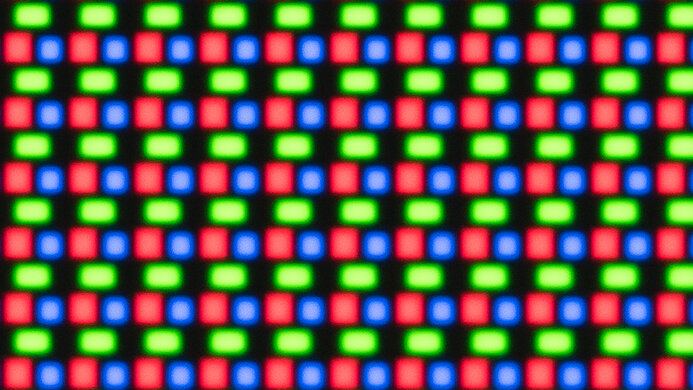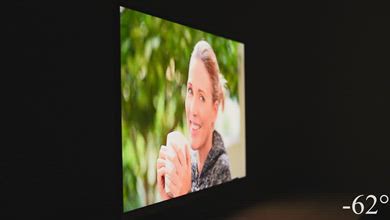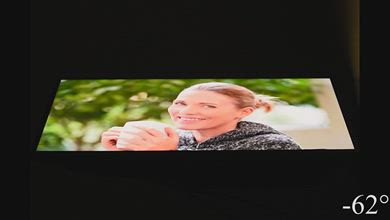Monitors are available with many different panel types, each impacting picture quality and motion performance in its own way. Modern monitors either contain an OLED panel or an LED-backlit LCD panel, the latter being commonly known as an LED display. Both OLEDs and LEDs have different panel types, each with its own strengths and weaknesses. In this article, we'll look at common panel types found in modern monitors and cover some differences in picture quality and motion handling.
Although a monitor's performance depends on many factors besides the panel type, certain types are better at some aspects than others. Understanding this can help you make a buying decision according to your needs.
You can also learn more about different panel types in TVs. For more specific comparisons and details, you can also read our articles for:

Common Panel Types Found In Monitors
We can classify modern monitors as either having OLED or LED displays, but that doesn't tell the whole story, as there are different panel types within each category. Each panel type displays an image differently, which impacts the picture quality and motion performance. Below is a quick explanation of each common panel type:
-
OLED (Organic Light-Emitting Diode): These are self-emitting displays, meaning each individual pixel emits its own light and can turn on and off. There are two common OLED panel types, WOLED and QD-OLED, which each have some differences:
- QD-OLED (Quantum Dot OLED): Developed by Samsung, QD-OLED panels feature a blue OLED layer underneath a quantum dot layer. This layer translates this blue light through red and green subpixels, and there's another blue subpixel that lets the light pass through. These panels only have three subpixels.
- WOLED (OLED with white subpixel): Made by LG, these panels consist of a white OLED layer and four subpixels: red, green, blue, and white. The red, green, and blue pixels turn the white light into colors, while the white pixel lets the light pass through. That said, all four pixels are never all on at the same time.
-
LED (Light-Emitting Diode): These types of monitors have an LED backlight behind a liquid-crystal display (LCD), and light passes through the layer of pixels to produce an image. The panels consist of liquid crystals that rotate to let light go through, and the way these crystals rotate is a defining characteristic of each panel type.
- IPS (In-Plane Switching): This is the most common panel type with monitors. The crystals are parallel to a glass substrate and rotate within the plane of that glass. That said, there are many different types of IPS panels, like ADS and IPS Black, and even the subpixel shape may change as there are those with chevron-based and rectangular subpixels. This is because many different manufacturers make these different types of IPS panels, and while they're all technically different on the micro level, they still share many of the same characteristics, and we consider them all types of IPS panels.
- VA (Vertical Alignment): Although more common on TVs, there are still a good amount of VA monitors. Unlike IPS crystals, these rotate perpendicular to the glass substrate to let light pass through.
- TN (Twisted Nematic): TN panels are less common now, but they once were the most common panel type. When light passes through them, the crystals twist.
Differences In Picture Quality
Each panel type performs differently in picture quality and motion handling. We'll break down the main differences between them below, but keep in mind that these are general characteristics and don't define the performance of every monitor.
Unless specified, we'll compare photos from the Dell Alienware AW2725DF (QD-OLED), LG 27GR93U-B (IPS), AOC Q27G3XMN (VA), and the ASUS ROG Swift Pro PG248QP (TN).
Black Levels, Contrast, and Black Uniformity
Winner: OLED
The main advantage of OLEDs is how much better the black levels are compared to LED displays. Because they can turn pixels on and off individually, they display perfect black levels with a near-infinite contrast ratio. OLEDs also have perfect black uniformity without any blooming around bright objects. This applies for both QD-OLED and WOLED displays.
Although VA panels are the best amongst LED displays for this, they're still far behind OLEDs. That said, LED displays with Mini LED backlighting can deliver the closest performance to an OLED if their local dimming features perform well. You can see examples of this with the Acer Nitro XV275K P3biipruzx with local dimming off compared to having local dimming on.
You can also learn about how we test contrast and black uniformity.
Brightness
Winner: LED
While OLEDs are the best choice to use in a dark room, LED displays are actually better to use in a bright room. They generally get brighter, but multiple factors impact the brightness besides the panel type. Even the backlighting type can impact the brightness, as most monitors that use full-array backlighting (including Mini LED monitors) get brighter than those with edge-lit backlighting. That said, this isn't a guarantee, and theoretically, you can have an edge-lit monitor that gets brighter than a full-array display, but in the current monitor market, the brightest displays are those with full-array Mini LED backlighting.
OLEDs don't have a backlight and their panel type impacts the brightness. OLEDs get their brightest with small highlights in HDR, but they can't sustain this brightness with larger highlights. While QD-OLEDs generally get brighter than WOLEDs with small highlights, they still aren't as bright as LEDs, especially in SDR.
Below are the average results for various brightness measurements we perform in SDR and HDR from 175 monitors we've tested on Test Bench 1.2 and Test Bench 2.0.1. We separated the results for edge-lit and full-array displays to show their differences. That said, we didn't include the HDR brightness results for TN panels because only one TN monitor we've tested on these test benches actually supports HDR.
| Test | IPS (Edge-lit) | IPS (Full-Array) | VA (Edge-lit) | VA (Full-Array) | TN | WOLED | QD-OLED |
|---|---|---|---|---|---|---|---|
| Count | 81 | 8 | 32 | 9 | 5 | 23 | 17 |
| Avg. SDR Real Scene | 367 cd/m2 | 561 cd/m2 | 351 cd/m2 | 587 cd/m2 | 307 cd/m2 | 224 cd/m2 | 251 cd/m2 |
| Avg. HDR Real Scene | 447 cd/m2 | 918 cd/m2 | 400 cd/m2 | 715 cd/m2 | - | 488 cd/m2 | 412 cd/m2 |
| Avg. HDR Peak 2% | 460 cd/m2 | 780 cd/m2 | 454 cd/m2 | 877 cd/m2 | - | 845 cd/m2 | 1010 cd/m2 |
| Avg. HDR Peak 100% | 478 cd/m2 | 1221 cd/m2 | 431 cd/m2 | 721 cd/m2 | - | 192 cd/m2 | 258 cd/m2 |
You can also learn about our brightness testing.
Reflections
While reflection handling is something to consider before buying a monitor to use in a bright room, the monitor's screen coating affects how well it handles glare. Most monitors have matte or semi-gloss coatings, but many QD-OLEDs have glossy coatings instead. This means they handle glare differently than other monitors, as reflective light is more direct, like a mirror, and matte or semi-gloss coatings spread light out more. That said, theoretically speaking, any panel type can come with any given screen coating.
You can also learn more about glossy vs matte coatings.
Viewing Angles
Winner: OLED
While the panel type doesn't directly impact the brightness, it does on the viewing angles. This is where OLEDs have an advantage, but IPS panels aren't far behind. That said, VA and TN panels have narrow viewing angles, so the image quickly washes out when you view it off-angle. TN panels even have inverted colors when you look at the display from below. If you have an old laptop with this panel, you can see this if you tilt the screen too far.
When it comes to OLEDs, there's no difference in viewing angles between QD-OLED and WOLED displays.
You can also learn how we test for the horizontal and vertical viewing angles.
Gray Uniformity
Winner: OLED
Gray uniformity varies between units, even those of the same model, so it's hard to generalize here, especially between LED panel types. For the most part, OLEDs are the most uniform, but even with that, they have issues with faint vertical lines in near-dark scenes. That said, this problem is hard for most people to see, and you likely won't notice it with most content.
You can also learn about how we test gray uniformity.
Color Gamut and Volume
Winner: QD-OLED
Multiple factors impact the colors that a monitor displays, so it isn't only dependent on the panel type. The color gamut really varies from model to model, and even amongst LED panel types, there isn't much of a clear trend with this. Some even have quantum dot layers to display a wider range of colors, which is what we see with QD-OLEDs and some IPS monitors.
There's more of a difference with color volume as QD-OLEDs display the most vivid colors. This is an advantage of the panel technology of QD-OLEDs specifically, and they display more vivid colors than WOLEDs. One area where WOLEDs really struggle is displaying bright colors, particularly colors other than white. On the other hand, VAs generally have better color volume than IPS and TN panels because they do a better job at displaying dark colors due to their higher contrast. That said, monitors with good local dimming features also tend to have good color volume, as it helps them display bright and dark colors well, regardless of panel type.
Below are examples of different color volumes in the DCI-P3 and Rec. 2020 color spaces between different panel types. The WOLED results are from the Sony INZONE M10S.
You can also learn about how we test the SDR color gamut, HDR color gamut, and HDR color volume.
Text Clarity
Winner: LED, any panel type.
While OLEDs are the clear winners regarding picture quality for the most part, there are some areas in which LED displays win. One is with text clarity because computer programs don't render text properly with the triangular subpixel layout of QD-OLEDs or the four-pixel layout of WOLEDs. There's fringing on both WOLED and QD-OLEDs with Windows ClearType enabled, but QD-OLEDs also have fringing at the top and bottom edges of windows.
As there are WOLEDs available with two different subpixel layouts, the older RWBG and the newer RGWB, they also look a bit different when it comes to text clarity. The RGWB layout has a bit less fringing, but the difference is hard to tell, and you'll likely only notice it if you're looking closely at text.
For the most part, text clarity doesn't change among LED panel types unless they have an unconventional subpixel layout, like a handful that have a BGR subpixel layout. Below are some examples of text clarity on 27-inch, 1440p monitors with different layouts.
You can also learn about how we test text clarity.
Burn-In
Lastly, the biggest downside with OLEDs is the risk of burn-in. This can happen with constant exposure to the same static elements over time, especially if you have the screen at the max brightness without varying content. This is a big concern if you need a monitor only for work, as static elements like toolbars can increase the risk of burn-in. It isn't so much of an issue if you change up what you do with your monitor, like by gaming or watching videos every so often. If that concerns you, it's better to go for an LED display, as they don't risk burn-in.
Learn about our accelerated burn-in test with TVs.
Differences In Motion
Winner: OLED
There are also some differences when it comes to the appearance of motion. This is another area in which OLEDs are superior to LEDs because they have a near-instantaneous response time for extremely sharp motion. TNs have the best motion handling in terms of LED panels, while VAs are known to have black smearing.
Like many aspects of picture quality, motion handling changes from model to model, and any defining characteristics between panel types are just generalizations. Also, most LED monitors have overdrive settings that drive the pixels for a faster response time at the cost of overshoot, which causes inverse ghosting. This can happen with any type of LED display.
Below are examples of the different panel types with our pursuit pattern at 240Hz. You can see some of the typical characteristics of each panel type, like the fact that motion looks sharp on the OLED and TN displays, while the IPS has blur and the VA has black smearing.
| OLED | IPS | VA | TN |
|---|---|---|---|
 |
 |
 |
 |
You can also learn about our motion testing.
Input Lag
While these different panel types affect motion in their own way, it's important to remember that the panel type doesn't impact the input lag. This is related to the monitor's processing and changes from model to model. This means you can have two models with the same panel with very different input lag.
Is One Panel Type The Best?
It's clear that OLEDs offer the most advantages regarding picture quality and motion handling, but that doesn't mean that OLEDs are the best choice for everyone. There are a few reasons why you wouldn't want to get an OLED:
- Brightness: If you want a monitor for a bright room, you should go for a bright LED display, especially if it has Mini LED backlighting. While some OLEDs are brighter than others (the ASUS ROG Strix OLED XG27AQDMG, for example), they're still behind LED displays.
- Burn-in: As mentioned, the biggest drawback to purchasing an OLED is the risk of burn-in. If you want a monitor only for work, then it's better to avoid OLEDs altogether. That said, this isn't something you should worry about as much if you vary your content, like if your work requires content creation and you're often switching between programs.
- Cost: OLEDs are expensive, as only high-end models use OLED panels. While the price of OLEDs may drop in the future, most cheap and budget-friendly monitors use IPS or VA panels. Only go for an OLED if you're comfortable spending more on a premium display. On top of that, most OLEDs are 27 inches or bigger, so if you want a basic and small display at a low cost, you'll have to go for an LED model.
Besides these factors, choosing an OLED or an LED monitor really comes down to personal preference. If you're looking to buy a new monitor, you should get whichever model is perfect for your needs.
You can also see all our monitor recommendations for more help making a buying decision.
Will More Types Come Out In The Future?
Technology constantly evolves, and monitor panels are no different. Manufacturers are always trying to improve and create an all-around perfect display, which current OLEDs don't provide due to their drawbacks. We'll likely see different types of OLEDs in the future that allow them to get brighter, like the tandem OLED technology in the seventh-generation iPad Pro. We may see this tandem OLED in monitors as early as 2026, but no monitor models using this technology have been announced at the time of writing this article. Tandem OLED is just a newer generation of WOLED that's advertised to get brighter and isn't a completely new panel technology.
Another panel technology we may see in the future is quantum dot electroluminescent (QDEL), which is self-emissive like OLED but without organic material, so it should be less prone to burn-in. MicroLED panels, which consist of many tiny microscopic LEDs that form pixels, are also a possibility in the future. We'll likely see this type of panel on larger displays before they transition to monitors.
What are your thoughts about these emerging panel technologies? We'd love to hear them in the comments.
Conclusion
With many different monitor panel technologies to choose from, it can be difficult to understand which is the best and which to buy. Monitors are classified as OLED or LED, and even though they each have different types of panels, there's a clear difference between OLED and LED displays. OLEDs offer better contrast, no blooming, more vivid colors, and superior motion handling. Although OLEDs have an advantage for the most part, this doesn't mean they're the better choice for most people, as LEDs don't risk burn-in, have better text clarity, and generally get brighter. Knowing which panel technology is the best really depends on your needs.













































